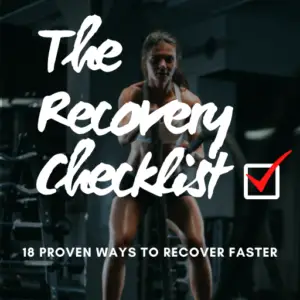Back in PT school, the worst physical therapy treatments fixed my pain. Twice.
The first time, persistent quadriceps tendon pain hampered my workouts. I rubbed the ultrasound head over the painful area a few times, and the pain vanished!
Therapeutic ultrasound isn’t proven for tendon pain (or many other conditions, either). So why did it work?
The second time, SI joint pain prevented me from squatting heavy without nagging posterior hip pain. It pestered me for weeks, until one of my PT school instructors offered to “reposition” and “realign” my sacrum.
Skeptical that my sacrum needed repositioning, I hopped up on the treatment table. After a few gentle osteopathic treatments, including palpation and muscle energy technique, I climbed off the table.
I was shocked because my SI joint pain had evaporated. I did heavy barbell squats (>400 lbs) that afternoon with zero SI joint pain. Amazing!
Since this experience, I have learned that SI joints and spines don’t get “out of alignment” and need to be “adjusted” for pain relief. Learn more about the scientific problems with this popular debunked back pain myth in this article:
Spinal Alignment: 5 Problems with This Popular Theory
Unproven treatments eased my pain. And I’m not the only one. Here are 3 reasons the worst physical therapy treatments work so well:
1. Placebo Effect
Expectations shape reality. Patients who expect to heal fast…well, they heal fast. Conversely, patients who catastrophize and anticipate chronic pain tend to recover more slowly.
The placebo effect impacts every intervention – those supported by stacks of scientific papers and the bizarre ones circulated by your weird relatives on Facebook.
A few strange examples of the placebo effect:
- Flashy medication packaging gives a drug – or sugar pill – a stronger effect
- Four placebo pills heal you faster than two
- Fake surgery cures knee arthritis pain
Bad treatments work because of the placebo effect.
Learn more about this mind-boggling phenomenon here: Adopt This Mindset to Live 14% Longer
2. Natural History
Your body is an amazing, self-healing organism. Can you imagine having a car that maintains and repairs itself? Sign me up!
Pain and injury tend to have a positive natural history – when left alone, they heal and stop hurting.

Even when normal healing erases pain, many folks attribute their improving symptoms to their treatment approach.
When this occurs, even the worst physical therapy treatments get credit for a recovery that was happening anyway.
Therefore, evidence-based physios, physicians and chiropractors select proven treatments that work better than placebo and faster than natural history.
Otherwise, treatments are a waste of time and money.
3. Therapeutic Alliance
Expert medical professionals foster a therapeutic alliance – a positive rapport-based relationship – with their clients. Clients heal faster when they have confidence in their healthcare provider.
A clever 2016 study showed that therapeutic ultrasound (remember, not a scientifically recommended treatment) worked significantly better for back pain when the physical therapist provided a detailed explanation of the procedure and purported benefits.
This study illustrates that therapeutic alliance changes outcomes. Both for the worst physical therapy treatments and for the best ones.

Use this phenomenon to your advantage; work with medical professionals you trust.
The Worst Treatments
At this point you may be wondering, “what treatments actually work?” and “how do I know my therapist is choosing the best interventions?”
The worst physical therapy treatments have 3 characteristics.
First, they are not supported by research. Passive treatments like ultrasound, electrical stimulation, ice, heat and kinesiotaping have less research backing than exercise and manual therapy.
Second, the client does not expect them to work. Expectations dictate outcomes. Even proven treatments like spinal manipulation work much better when patients expect them to work.
Third, the worst physical therapy treatments conflict with the provider’s experience. A physio’s expectations and beliefs about a treatment also influence outcomes.
Therefore, expert PTs select interventions supported by research and congruent with patient expectations and their own experience.
Learn how the best and worst physical therapy treatments stack up head-to-head in this article:
Ranking 10 Physical Therapy Treatments (Best to Worst)
For more expert health tips, join the free Facts & Physio Newsletter. Plus, get The Recovery Checklist and learn 18 proven recovery strategies when you sign up.

